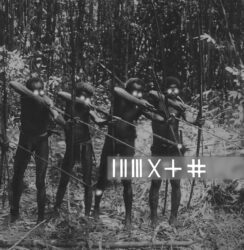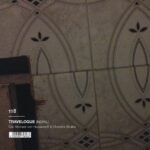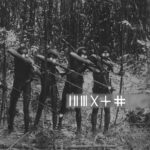CARL MICHAEL VON HAUSSWOLFF & CHANDRA SHUKLA – TRAVELOGUE (NEPAL)
In what promises to be the beginning of a “series of collected international audio diaries”, capturing “the essence of everything from the tiniest microcosms of nature on up to the polluted, diesel-fuelled roars of postmodern globalization”, Carl Michael von Hausswolff and Chandra Shukla recorded various sounds near Kathmandu, Nepal. The locations they recorded may be familiar to everyone who ever visited the area: the Bagh Bhairav Temple and Chilancho Stupa (Kirtipur), Durbar Square, Boudhanath Stupa, Swayambhunath Stupa and Shri Pashupatinath Temple (Kathmandu), The World Peace Pagoda, The Shiva Cave, Devi Falls and Phewa Tal Lake (Pokhara). With the location recordings they made, they created this 55-minute, 4-track “sonic travel diary when the handheld recorder was left on where the sun never sets.”
The resulting soundscape could have no better fitting home than the Touch label, well-respected for their catalog including ‘pure’ environmental recordings as well as experimental electronic music. Ánd the combination of the two of course, such as in this case.
I am fortunate enough to have visited Kathmandu and Pokhara myself years ago, and still have vivid memories of most of the locations mentioned. And of its sounds. Somewhat to my surprise, the soundscapes on this album did not match the sounds that I remembered at all! I wonder if local inhabitants would even recognize the sound of their own environment when listening to this album.
If you focus on the details, you will recognize distinct Nepali sounds, but overall, the soundscapes are much more, eh, let’s say ‘industrial’ than the area itself (unless, of course, it has changed a lot in recent years, but I can hardly imagine that).
I guess the description ‘audio diaries’, ‘recording the essence’ and ‘sonic travel diary’ raised my expectation of ‘true-to-nature’ environmental recordings – but this was clearly never the intentions of von Hauswolff and Shukla. They used the material to create a completely new work of (sonic) art. And with an impressive result, by the way: the sounds of PharLoKora, Anadu, Annapurna and Sagarmatha (Chomolungma) are each quite overwhelming – without ever losing touch of the details.
This makes me curious about future, editions, however. In what way will they sound different if the basic material is recorded in other parts of the world? What would be the difference when the basic material is recorded in Nepal, or Lagos, or Amsterdam (just to name a few)? Will these location recordings be retraceable to their origins in any way? Or are they just the means to create a fictional map from land that exists in the artists’ minds (and consequently also in the listener’s mind also)?
Interesting questions! And isn’t that what art is for: to raise questions? Mission completed!
I can’t wait for the next chapter!
CARLOS CASAS – KAMANA
Carlos Casas is an artist combining film, sound, and visual art. His films were shown and awarded at various international film festivals. Apart from that, he works on an ongoing series called Fieldworks, “a sort of landscape video notes combining ambiental video and radio frequencies, capturing the atmospheric qualities of a landscape.”
For Kamana he used recordings he made with the Aeta, “an indigenous group from the Zambales region in the Philippines. One of the oldest inhabitants of the region the Aetas are also some of the most fascinating and ancient nomadic and hunter-gathering cultures.”
But these are not simply archival recordings of the Aeta culture. For the LP/CD version of this release, they were heavily treated, edited en reworked into “an (un)real Sonic Exorcism filled with Ancestral Frequencies, Haunted Ghosts, and other animistic spirits roaming the Pinatubo forests.”
Diving deeper and deeper into the jungle memories and feelings, it seems the soundscapes are getting more and more abstract as the LP/CD progresses. Opening with a warm Fourth World sound, the music slowly changes into a more psychedelic fever dream, or even a scary screeching noise (Torture Dance).
Kamana comes in a combination of media: the extensive edition includes a vinyl LP, a CD version with the seamless Katapusan (Fire And Mud Mix) (I assume that this is a seamless mix of the same tracks as the LP, but I’m not really sure), a 7″ vinyl interview with a bat hunter, and a digital download featuring the collected Aeta field recordings.
Another physical option is the CD + LP (leaving out the 7″, but including the digital download).
The digital edition downloads the full album tracks plus the bonus field recordings.




